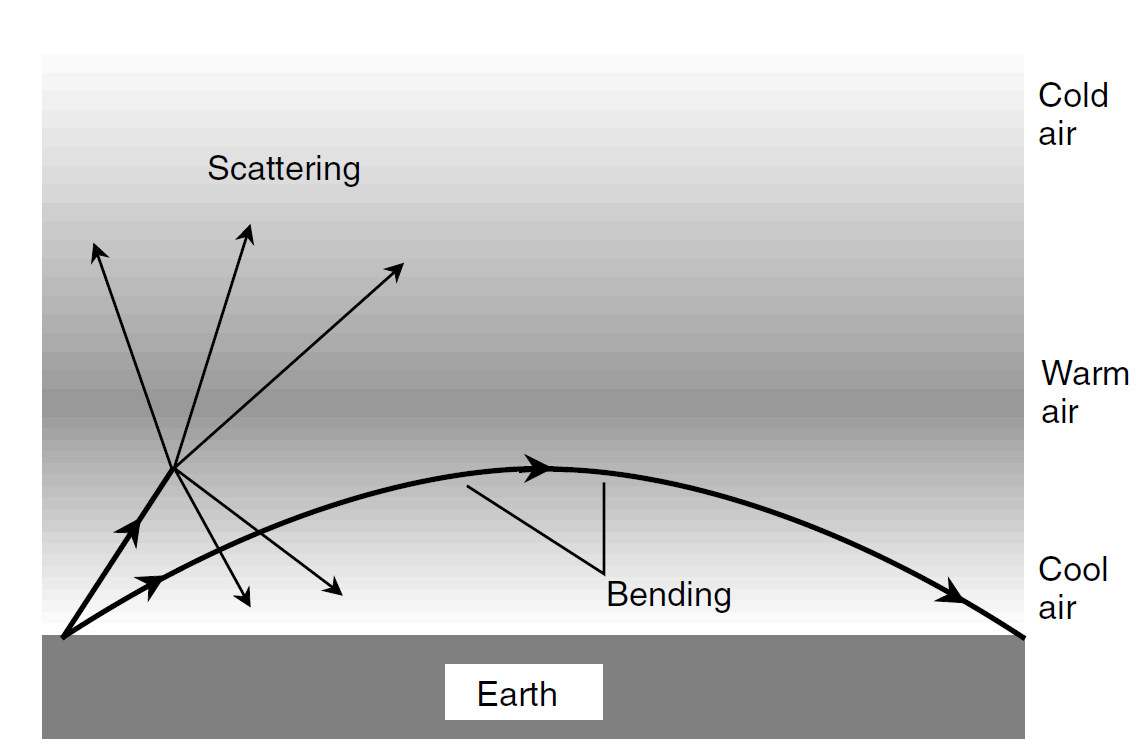


 الفيزياء الكلاسيكية
الفيزياء الكلاسيكية
 الكهربائية والمغناطيسية
الكهربائية والمغناطيسية
 علم البصريات
علم البصريات
 الفيزياء الحديثة
الفيزياء الحديثة
 النظرية النسبية
النظرية النسبية
 الفيزياء النووية
الفيزياء النووية
 فيزياء الحالة الصلبة
فيزياء الحالة الصلبة
 الليزر
الليزر
 علم الفلك
علم الفلك
 المجموعة الشمسية
المجموعة الشمسية
 الطاقة البديلة
الطاقة البديلة
 الفيزياء والعلوم الأخرى
الفيزياء والعلوم الأخرى
 مواضيع عامة في الفيزياء
مواضيع عامة في الفيزياء|
Read More
Date: 24-12-2020
Date: 29-10-2020
Date: 24-12-2020
|
TROPOSCATTER
At frequencies above about 100 MHz, the atmosphere has a scattering effect on radio waves. The scattering allows over-the-horizon communication at VHF, UHF, and microwave frequencies. This is called tropospheric scatter, or troposcatter. Dust and clouds in the air increase the scattering effect, but some troposcatter occurs regardless of the weather. Troposcatter takes place mostly at low altitudes where the air is the most dense. Some effects occur at altitudes up to about 16 km (10 mi). Troposcatter can provide reliable communication over distances of several hundred kilometers when the appropriate equipment is used.
Figure 18-4 shows tropospheric scatter and bending. The transmitting station is at the lower left. There is a temperature inversion in this example; it exaggerates the bending. If the boundary between the cool air near the surface and the warm air above is well defined enough, reflection can occur in addition to the bending. If the inversion covers a large geographic area, signals can bounce repeatedly between the inversion boundary and the surface, providing exceptional long-range communication, especially if the surface is salt water.

Fig. 1. The troposphere can bend and scatter radio waves at some frequencies.



|
|
|
|
تفوقت في الاختبار على الجميع.. فاكهة "خارقة" في عالم التغذية
|
|
|
|
|
|
|
أمين عام أوبك: النفط الخام والغاز الطبيعي "هبة من الله"
|
|
|
|
|
|
|
قسم شؤون المعارف ينظم دورة عن آليات عمل الفهارس الفنية للموسوعات والكتب لملاكاته
|
|
|